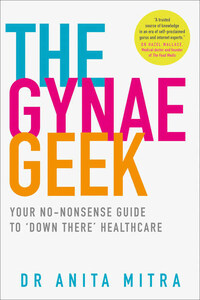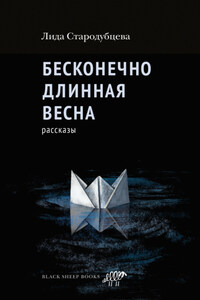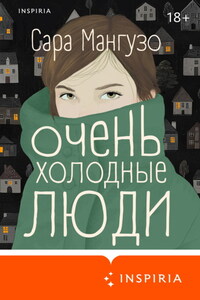Copyright
Thorsons
An imprint of HarperCollinsPublishers
1 London Bridge Street
London SE1 9GF
www.harpercollins.co.uk
First published by Thorsons 2019
FIRST EDITION
© Dr Anita Mitra 2019
Illustrations © Nicolette Caven 2019
Cover layout design © Ellie Game 2019
A catalogue record of this book is available from the British Library
Dr Anita Mitra asserts the moral right to be identified as the author of this work
All rights reserved under International and Pan-American Copyright Conventions. By payment of the required fees, you have been granted the nonexclusive, non-transferable right to access and read the text of this e-book on screen. No part of this text may be reproduced, transmitted, downloaded, decompiled, reverse engineered, or stored in or introduced into any information storage retrieval system, in any form or by any means, whether electronic or mechanical, now known or hereinafter invented, without the express written permission of HarperCollins e-books.
Find out about HarperCollins and the environment at www.harpercollins.co.uk/green
Source ISBN: 978-0-00-830517-8
Ebook Edition © March 2019 ISBN: 978-0-00-830518-5
Version 2019-02-21
Acknowledgements
It is such an honour to write something for the whole world to see. But I couldn’t have done it without the support of some incredible human beings who deserve huge thanks.
To Dr Rupy Aujla, my brother from another mother, for being the one who forced me to put myself out there to talk about something I believe the world needs to know.
To Dr Laura Thomas, for taking a chance on The Gynae Geek and inviting me on her podcast to discuss vaginas before that was a ‘cool’ thing to do.
To Dr Hazel Wallace and Alice Liveing, who both gave me a massive leg-up by collaborating with me on their social-media channels and giving me valuable advice about how to survive in the online world.
To Carly Cook, for her sass and support throughout the book-writing process and for hydrating me with many a mint tea. To the wonderful HarperCollins team – Carolyn Thorne, who saw the potential in my idea, George Atsiaris, Josie Turner and Julie McBrayne, who brought the campaign to life – thank you all!
To Adam Willis, my strength coach, but most of all my friend, for always being a voice of reason.
To my best friend, Achini Wanasinghe, and my mum, who listen to my moaning on a daily basis and support me no matter what. And all my other friends who have put up with being ignored for the time that I’ve spent writing the book.
To both of my parents for giving me the education that enabled me to be in the position to write this book.
To all the patients and my social-media followers who shared their stories and asked the questions that inspired it.
And finally, to Menelaos Tzafetas, aka ‘Mr Gynae Geek’, for being the one, in so many ways.
Introduction: Down-there healthcare by the Gynae Geek
It’s three o’clock on a Wednesday afternoon and I’ve just performed a surgical evacuation on a woman who was nine weeks pregnant before she miscarried. I’m in theatre, writing an operation note, when my bleep goes off. It’s A&E. I speak to a worried-sounding nurse who asks me to come urgently and see a patient: ‘Forty-one years old … bleeding very heavily … not pregnant … haemoglobin is four and—’
‘What did you say? FOUR?’ I jump in.
‘Yes, Doctor, four—’
‘OK, I’m coming. Put her in resus. And put in a large cannula if you don’t already have good IV access. Oh, and what is her pulse?’
‘One hundred and seven.’
‘OK, I’m coming, I’m coming.’
I’m worried. Why is this patient’s haemoglobin level almost one third of what is normal for a healthy female? I scrawl the rest of my notes in my best ‘I’m-in-a-rush-but-I’m-trying-to-make-this-as-legible-as-possible’ handwriting, a skill that’s almost second nature now. I grab a disposable green paper gown to cover my theatre scrubs and run down the corridor to A&E. I enter the resus department, my gown fanning out rather dramatically behind me, and rush into the patient’s cubicle.
She is hooked up to a machine that is beeping wildly because of her racing pulse, and there is a lot of blood on the bed. The nurse I spoke to on the phone looks concerned, standing over the patient who seems surprisingly calm, albeit slightly clammy. I ask her if she’s sure she isn’t pregnant; she laughs and tells me it’s impossible, and the nurse confirms the pregnancy test is negative. She tells me she’s having her period, but it’s much heavier than normal. I ask her how many pads she’s been using.








